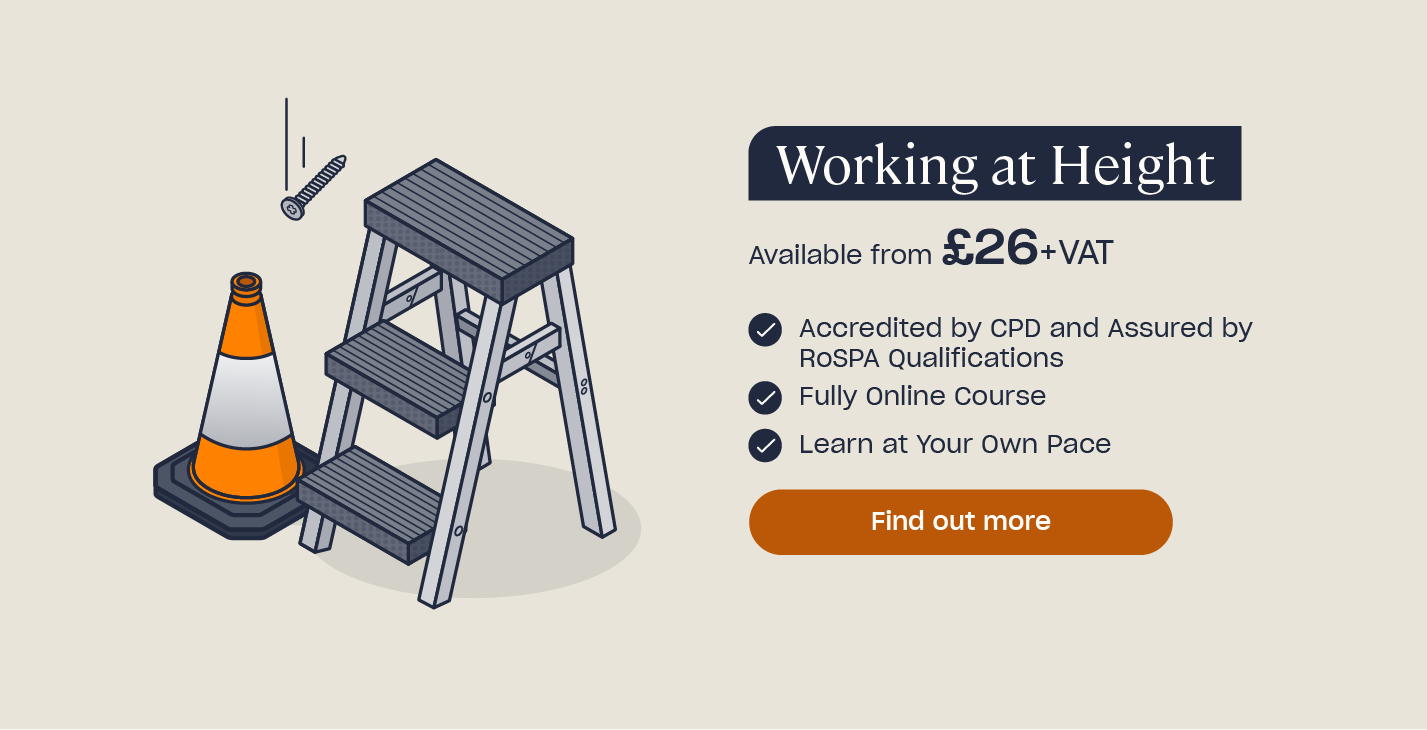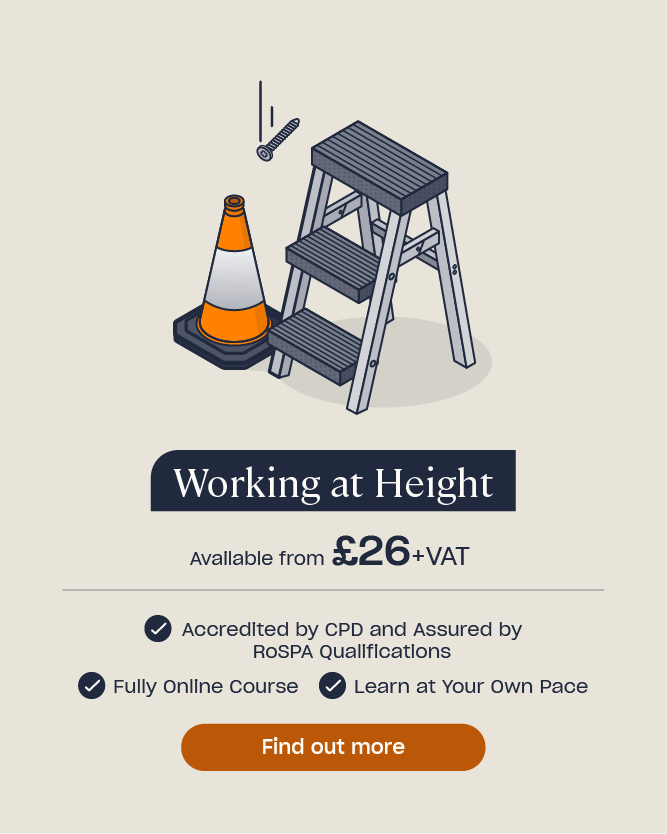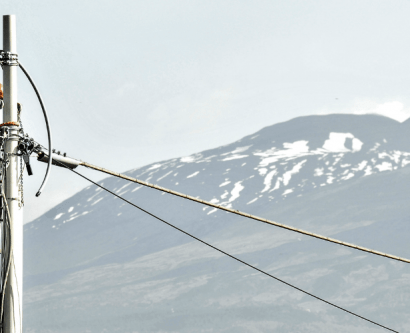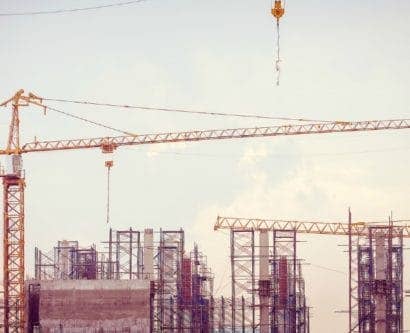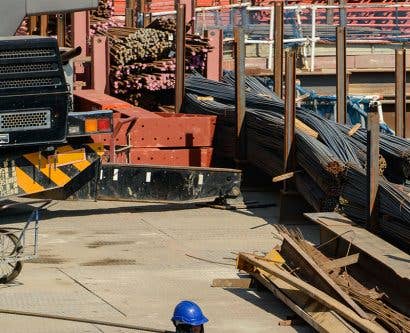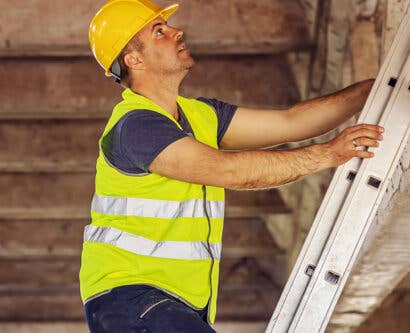Using Fall Protection to Control Working at Height Hazards
In the UK, falls from height are one of the most common causes of workplace injuries, and account for the highest proportion of work-related fatalities resulting from accidents every year. Falls from almost any height can result in serious injuries or death. Therefore, it’s essential that all work at height is adequately considered and the correct control measures are applied.
This article will discuss some examples of fall protection. It will help to aid your understanding of the methods of fall protection that employers may select to control working at height hazards.
Safety Harness Training
Fall arrest safety harnesses are designed to minimise the dangers of working at height and knowing how to use them safely is critical. Our Safety Harness Training has been produced in partnership with one of the UK’s leading Work At Height specialists to provide you with the knowledge and skills to work with harnesses safely.
What is Work at Height?
Work at height refers to work in any location where, if there were no precautions in place, a person, object, or material could fall a distance that is likely to cause personal injury. For example, working in areas where someone can fall off an edge, through an opening, or through a fragile surface (e.g. a skylight or fragile roof sheeting); unsafe or inappropriate use of ladders and stepladders; or working on a scaffolding platform or mobile elevating work platforms (MEWP).
Examples of work at height include:
- Roofing work, including inspections of roofs.
- Working on top of, or near to, roof lights or fragile roofing.
- Gutter and window cleaning.
- Shelf stacking and unloading vehicles.
- Machine and plant maintenance.
- Putting up displays.
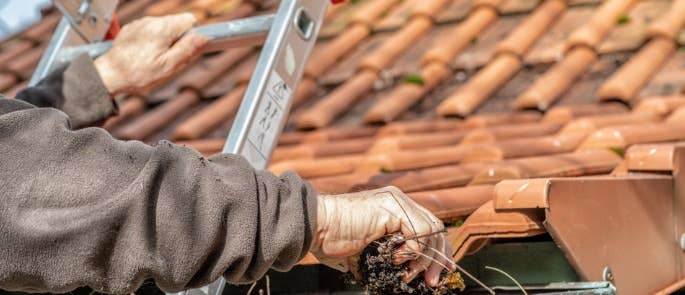
Working at height hazards and the level of risk they pose vary from business to business and the activities that are carried out there, but all work at height can pose a risk of falling if not adequately controlled. It’s therefore crucial for the work to be planned and carried out safely.
Why is Working at Height Safety Important?
The Health and Safety Executive (HSE) annual statistics state that, in 2022/23, there were 60,645 non-fatal injuries reported by employers under RIDDOR, and falls from a height accounted for 8% of these. Additionally, falls from height accounted for 40 deaths and the highest proportion of fatalities caused by accidents. As these statistics demonstrate, work at height that is not adequately controlled can have serious consequences.
It’s important to note that, under the Work at Height (WAH) Regulations 2005, the first duty of every employer is to ensure that, where possible, work at height is avoided. Where staff must work at height, it’s essential that it has been properly planned and organised from the beginning, is properly supervised at all times, and carried out so that it is safe, so far as is reasonably practicable. In addition, every person involved in all these stages must be trained and competent in how to carry out their tasks safely.
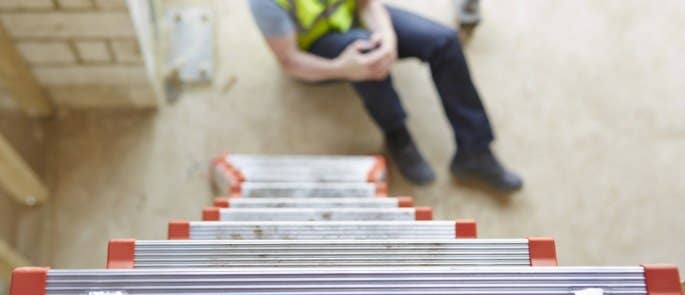
If work at height cannot be avoided, the risk assessment will need to identify what fall protection is necessary to control the working at height hazards.
Risk Assessment
Where staff must work at height, it’s essential that a risk assessment is carried out prior to the work commencing. Risk assessments must be carried out by a competent person, who has the necessary skills, knowledge, and experience to be able to safely assess the risks involved with working at height activities. They will need to consider and decide on control measures to eliminate or reduce these risks to as low as is reasonably practicable.
The WAH Regulations set out an order of effective controls for managing the risks associated with working at height. The order of controls starts with the controls that should be considered first at the top. You can read more about the hierarchy of control for work at height here: Working at Height Regulations – Hierarchy of Control Measures.
Working at height fall protection is one effective way of controlling work at height risks, and the type selected must correspond with the hierarchy of control.

Certain ones cannot be chosen first unless others are not reasonably practicable or they do not sufficiently reduce the risk, in which case a combination of controls may be used. For example, working at height harnesses cannot be chosen before considering safe working platforms, but they may be used in combination with them if residual risk is identified after the safe working platforms are considered.
Examples of Fall Protection Equipment
The examples of fall protection throughout this section are discussed in the order outlined by the hierarchy of control measures. Avoidance of working at height is explained first as this must be considered before fall protection equipment.
1. Avoiding Work at Height
As previously mentioned, under the WAH Regulations, employers must always avoid the need for working at height where it’s reasonably practicable to do so. To comply with this, employers must properly plan all work activities before work begins and always consider how work at height could be avoided.
For example, replacing ladders or low level access platforms with extension poles for window cleaning. Avoiding working at height could also be planned into the workplace, e.g. installing a light fitting that is designed to be lowered when changing the bulb, rather than having to work at height to change it.
2. Preventing Falls
Where work at height cannot be avoided, the second step is to use an existing safe place that prevents people from falling, such as a flat roof with permanent guardrails. Where this isn’t reasonably practicable, employers must choose the most suitable work equipment to prevent falls, or if that is not reasonably practicable, to mitigate the consequences of a fall from height or the fall of materials or objects.
The individual who is responsible for selecting fall protection equipment will consider a variety of factors to ensure suitable equipment is selected. This includes, but is not limited to, considering the work environment, any space constraints, adequate clearance for the equipment, and how many people are working at height that need protection.
Examples of types of fall protection equipment that may be used to prevent falls are listed below.
Properly constructed working platforms
Properly constructed working platforms fitted with guardrails and toe boards are the most effective working at height equipment for preventing people or objects from falling from height.
Examples of working platforms include scaffolding and mobile towers, and mobile elevating work platforms (MEWPs).
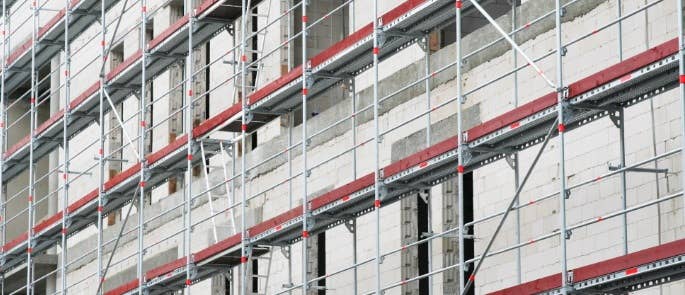
Safe working platforms are an example of collective fall protective equipment. They should be considered if avoiding the work at height or using an existing safe place is not reasonably practicable. Where possible, safe working platforms should be used for work at height in preference to other methods of fall protection.
Note that, where preventing falls using collective equipment is not doable, fall restraint PPE should be considered to prevent a fall. For example, using short lanyards when working on a flat roof with no permanent guardrails to stop employees reaching areas with a fall risk. We’ll discuss PPE usage later.
Mobile towers
Mobile towers (originally called tower scaffolds) provide a safe alternative to full scaffolding for many routine maintenance or repair activities. They should always be considered before ladders.
All mobile towers must be assembled by formally trained and competent personnel. The manufacturer’s instructions must always be followed during erecting, dismantling, and inspecting them. Furthermore, employers must ensure that workers can get safely to and from the work platform, and that all platforms have the required edge protection.
Low level mobile tower platforms
For low level work at height, there is a wide variety of low level mobile tower platforms available. There are also low level platforms, commonly called podium steps or platforms, that can be used. Both have a working platform and handrails, and provide safe access up to a platform height of about 1.5 – 2 metres. They should always be considered before ladders.
Mobile elevating work platforms (MEWPs)
The two common types of MEWPs are:
- Telescopic booms (often called ‘cherry pickers’). These can provide access to difficult or restricted areas.
- Scissor lifts. These have a large platform and so can take greater loads than telescopic booms, and are useful for safely installing electrical and mechanical equipment.
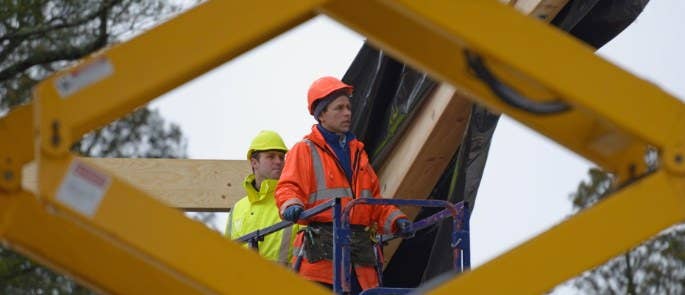
Before using MEWPs, employers must ensure that all work involving the MEWP is properly planned, that the MEWP will never be overloaded, and that anyone using a MEWP is competent to do so.
3. Reducing the Consequences of a Fall
If falls cannot be eliminated or prevented and there is no safe place, then the use of work equipment that provides collective protection to minimise the distances or consequences of a fall are the next level of the hierarchy of control. This should only be considered when it is not reasonably practicable to avoid or prevent falls from height.
Examples of collective protection work equipment are:
- Safety nets. In select circumstances, high fall-risk activities may be mitigated by using safety nets. Safety nets may be appropriate in situations where work is carried out on or near fragile roofing. If used, there must be adequate clearance under the nets to prevent injury.
- Soft landing systems, including airbags. Airbags might be appropriate in situations where falls might occur from a lower height, such as when loading and unloading vehicle trailers. They should be located as close as possible to the working area to ensure they catch anyone who might fall. Airbags decrease in effectiveness as the fall distance increases, so should only be used for small fall distances.
4. Personal Protective Equipment (PPE)
Once all the other steps of the hierarchy have been considered, fall arrest PPE can then be considered. Fall arrest PPE is used to stop a fall that is about to happen or is happening, either by stopping the fall entirely or stopping the fall before contact with a surface.
There are two types of fall arrest equipment:
- Fall restraint harnesses. This prevents a fall that could otherwise happen without it. For example, it may be used when working on a MEWP to prevent the person from being thrown out of it if the MEWP strikes an obstruction. The lanyard attached to the wearer’s safety harness must be short (less than 1 metre).
- Fall arrest harnesses. The main difference between a fall restraint and an arrest system is that the restraint system prevents the fall before it happens, whereas the arrest system stops the fall while it’s happening before contact with a surface. To be effective, they must have secure attachment points and clearance from the ground so the shock absorbing lanyard can deploy.
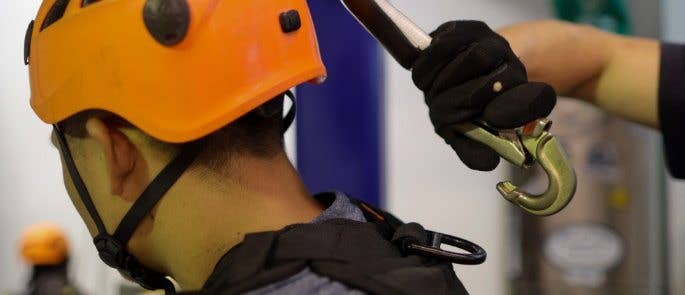
Fall arrest equipment should only be used when it’s not reasonably practicable to implement any of the hierarchy’s higher levels, or if the higher levels do not sufficiently control the risk.
Furthermore, they require the wearer to receive thorough training in their use and depend on constant on-site supervision. In many cases, they are used in combination with higher levels of control where residual risk is present. A good collection of controls will ensure that the risks posed by working at height hazards are kept to an absolute minimum.
It is an employer’s duty to assess the specific working at height activities and conditions, and select appropriate fall protection equipment for them where necessary. This may be a combination of many to reduce the risk to an acceptable level. Anyone who works at height also has legal duties in relation to fall protection equipment — to follow the instructions and training they receive, use the working at height equipment correctly and safely, and report any defects in the work equipment. All of this will help to ensure that working at height risks are minimised and everyone can stay safe at work.
Further Resources:
- Working at Height Training
- How to Develop a Rescue Plan for Working at Height
- Working at Height Rules and Regulations
- Safely Securing Ladders: Guidance & Procedure
- What is a Method Statement & How Do I Fill it in?
- Ten Common Construction Site Hazards
- A Ladder Inspection Checklist: Free Template
- Working at Height Quiz


